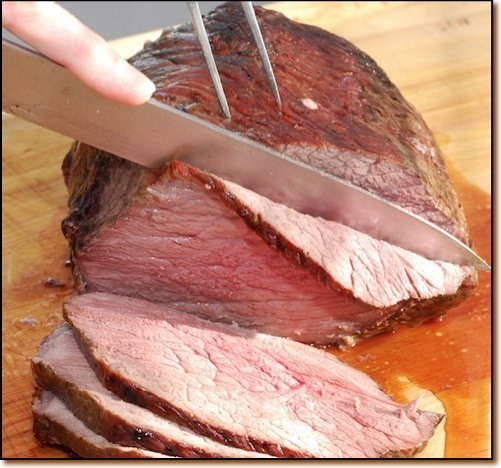A young newlywed bride wants to make a fabulous meal for her new husband. She’s purchased a large top round of beef to roast. As her spouse watches, she cuts the two ends of the roast off and tosses them in the trash.

“That’s 20 dollars a pound!” he protests. “Why do you cut the ends of the roast off?”
“That’s the way my Mom does it,” she replied. The man was puzzled.
Soon thereafter, they were at the Mom’s house. She began to prepare roast and also cut and discarded the two ends. “Why do you do that?” the husband asked. “That’s the way Grandma does it,” Mom said.
Holiday time came and Grandma began the family roast beef with the same procedure. The new husband was dumbfounded. “Grandma,” he pleaded, “why do you cut the ends of the roast off?”
“I never had a pan big enough,” she admitted. So, in this family the correct way to make a roast is to cut the two ends off first WITHOUT ANYONE ASKING WHY!
Who made this farm-to-table stuff up in the first place?
Before you consider a change in the way you choose food, don’t you want to know WHO is behind and WHY this movement was started? Why is it attracting so much attention lately?
Alice Waters is generally regarded as the matriarch of the farm-to-table movement, although she didn’t realize it at the time. She only wanted the best TASTING food for her restaurant and herself.
This video will explain her simple and honest motivations:
There’s nothing “hippie” about wanting the best tasting food. You can be from any walk of life and still want alive, vibrant flavors from what you eat, right? Granted, Alice’s Chez Panisse restaurant is in Berkeley, California. That’s pretty much hippie central in the early 1970s.
Let’s accept that as our first definition of farm-to-table foods. It’s the food that tastes the best, has the most pronounced flavor. A strawberry should taste bright, sweet and a bit tart. Many strawberries do not. They’re hard and white in the center, void of flavor.
To join this movement, you should first consider if you believe that foods grown close to your home have more flavor than those shipped from elsewhere. Do you believe it’s true?
Charlie Trotter is a renowned Chef. He knows it’s not just for hippie-types anymore:
Doesn’t that seem less complicated to you? Farm-to-table simply means getting the food as quickly as possible from the original source to your kitchen, in a belief that the freshest food tastes best.
There are other fore-farmers of this movement, but many have taken a more “activist” role. Whether protecting the planet, saving the soil, freaking over Franken-foods, or obliterating obesity, these effects of food are closely related but separate issues from what might really be important to YOU.
We’ll discuss all those other reasons in later blogs, but the activism attached to FTT is what has clouded and confused the issue for home cooks that don’t own fancy restaurants or their own.
You don’t need to be a fancy chef to demand the best flavor of your food…if that’s something that’s important to you. If microwavable food and bags of Doritos is your idea of “tastes great”, then you’ve found your happy place (or meal).
But, if this first concept, the idea that your food could actually TASTE better intrigues you, then we’ll continue our journey together and examine a few other reasons people are really starting to care about this movement.
In the mean time, do you think you could get more flavor out of your food? What would you be willing to give up? Would you pay more money for better tasting food? I’d really like to know. Please tell me with your comment below:

